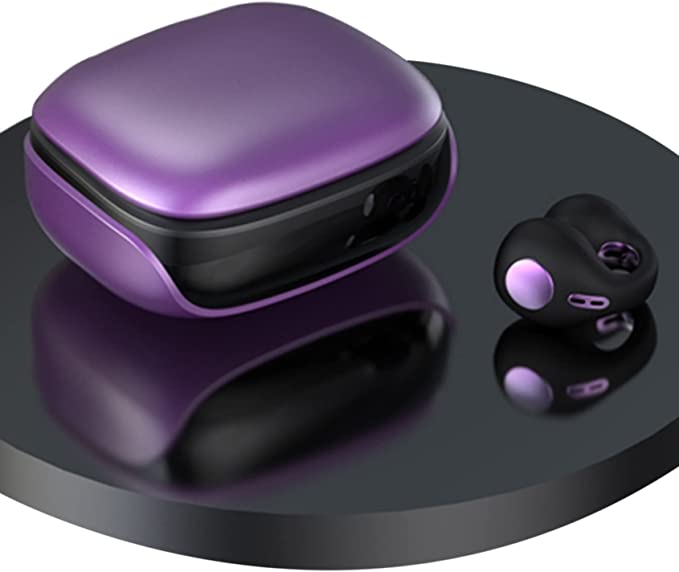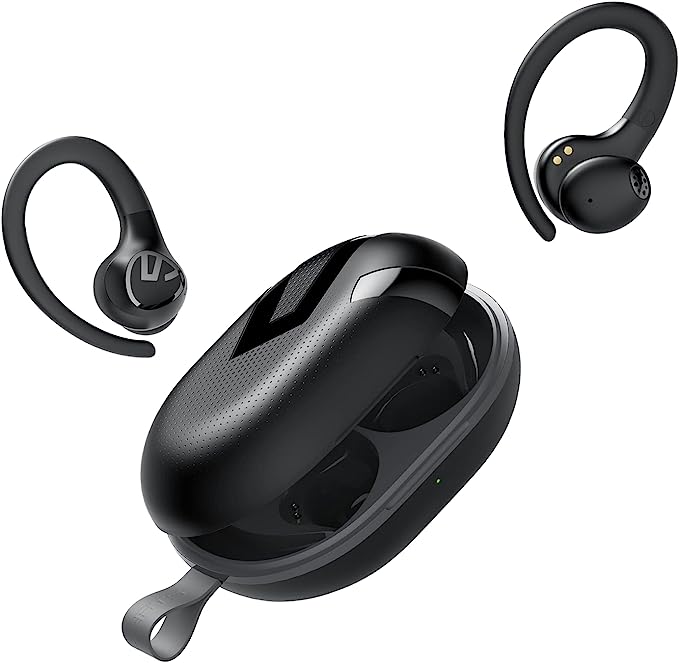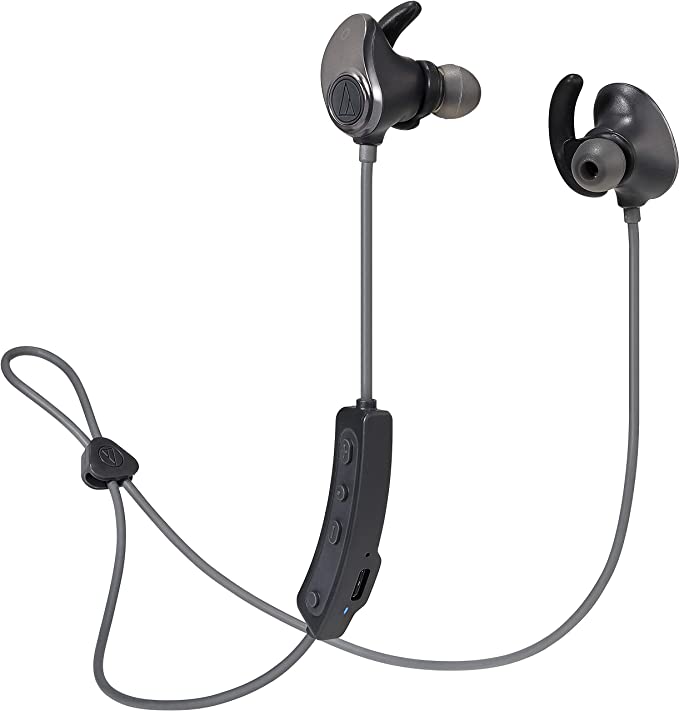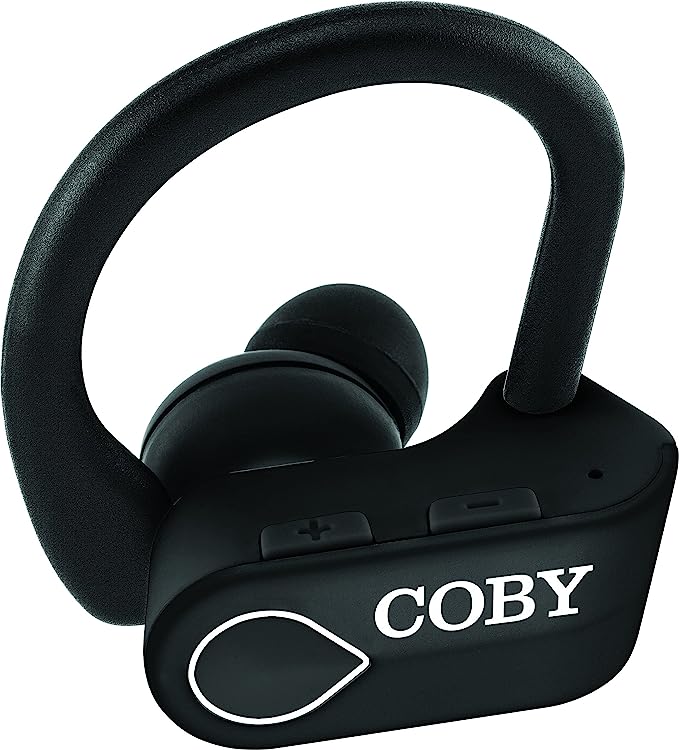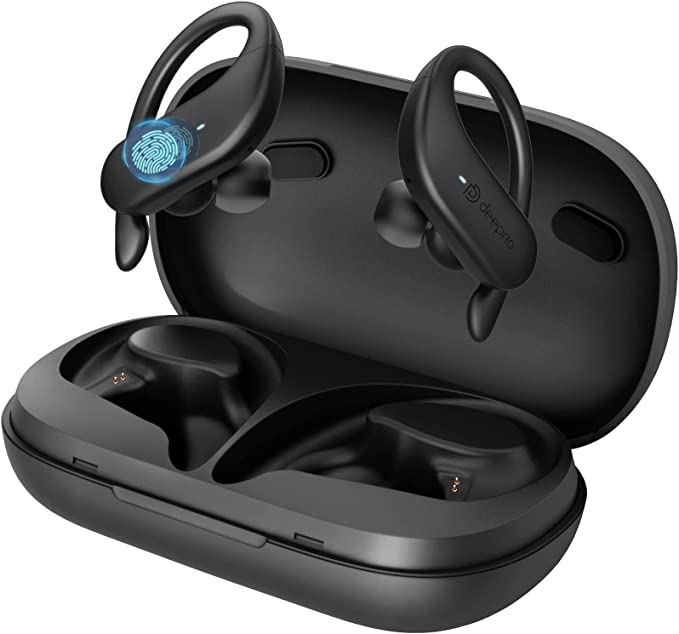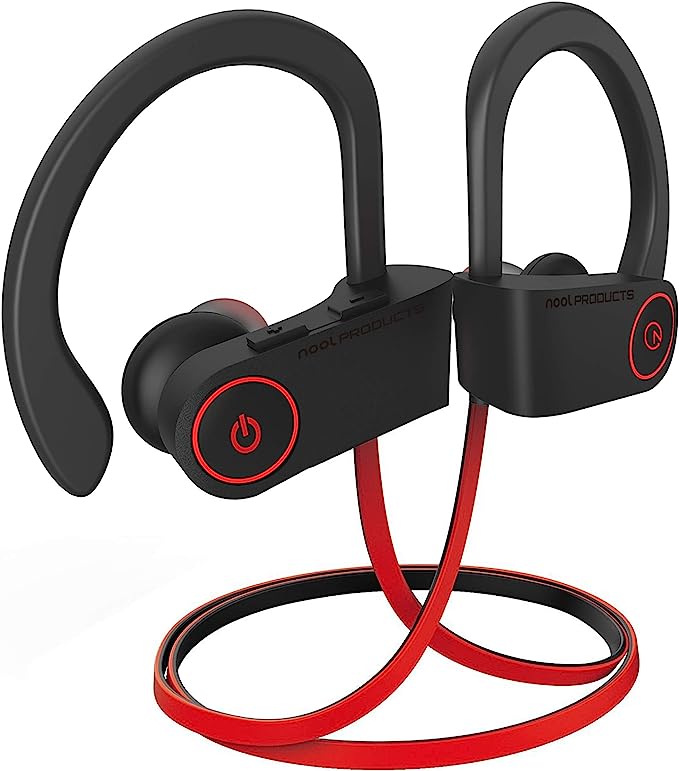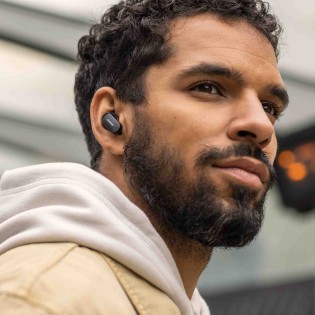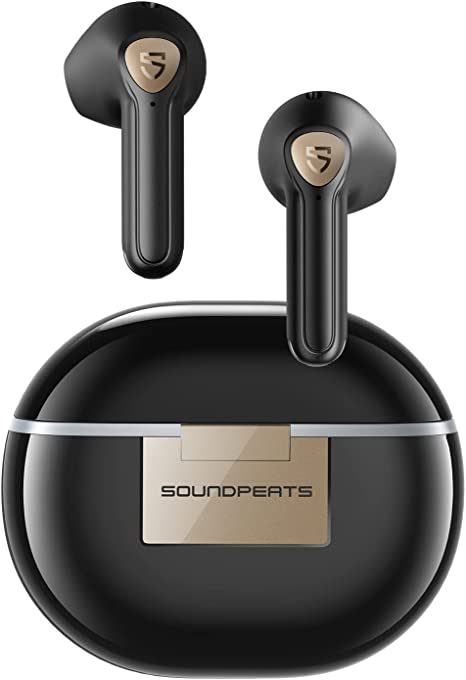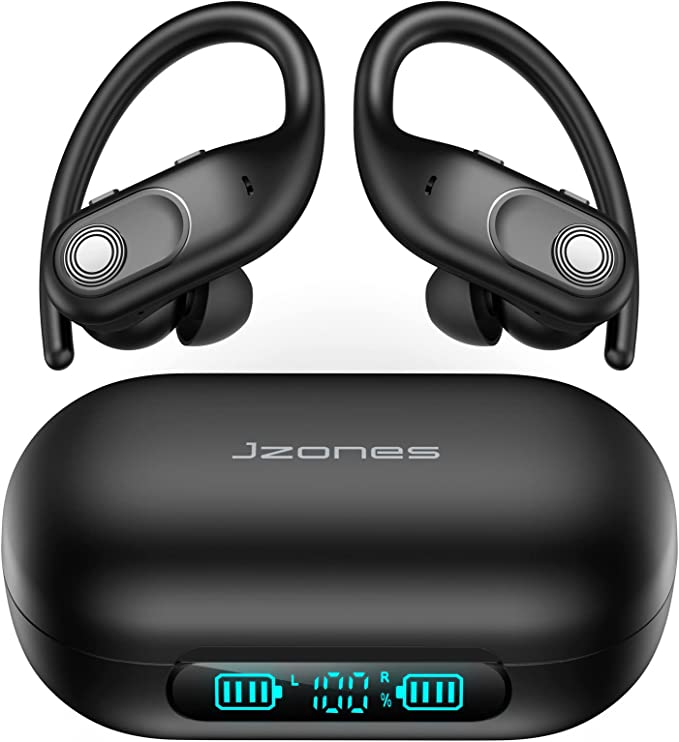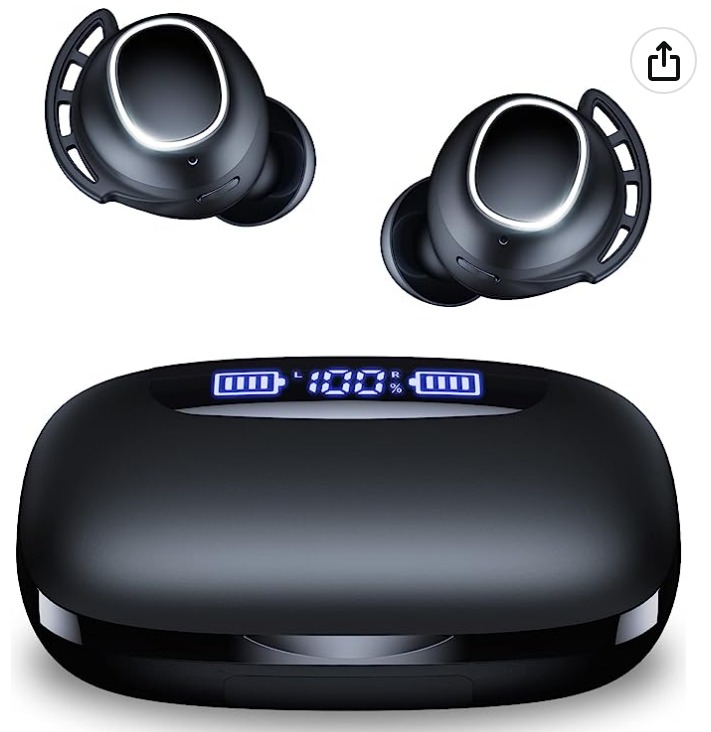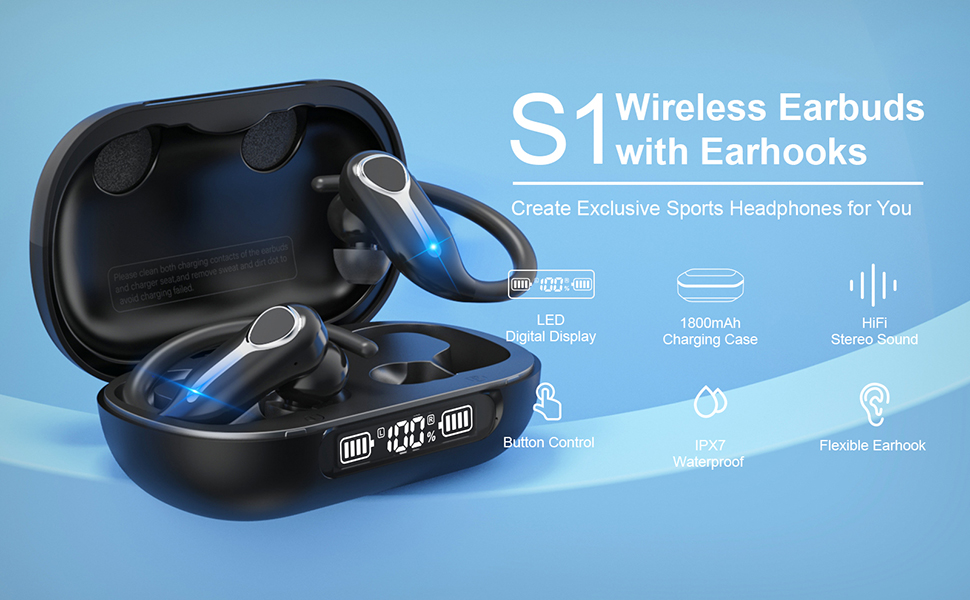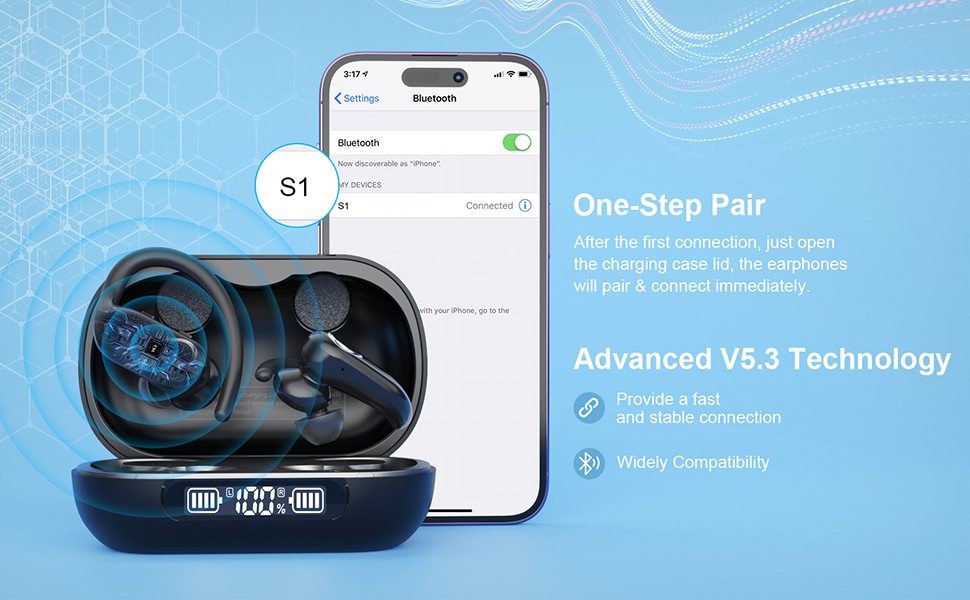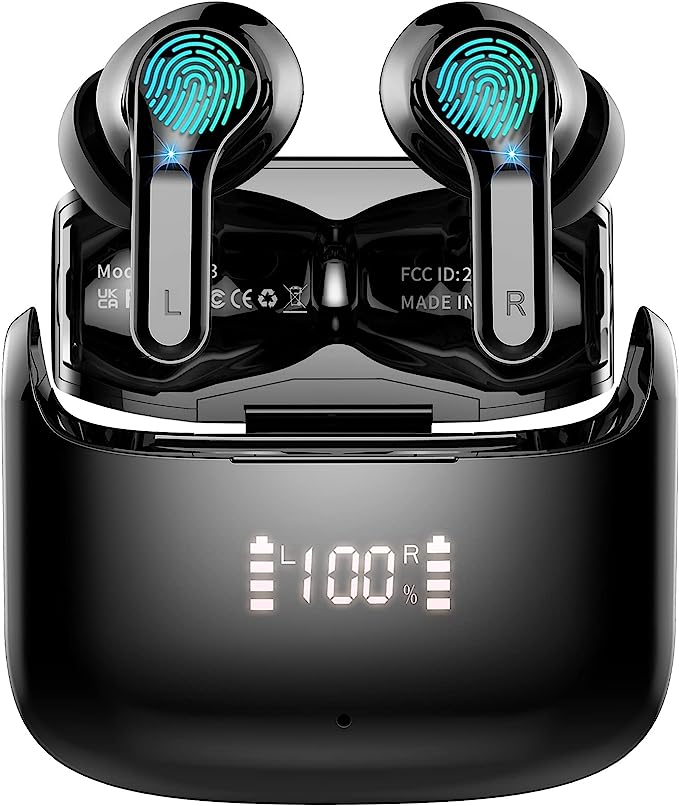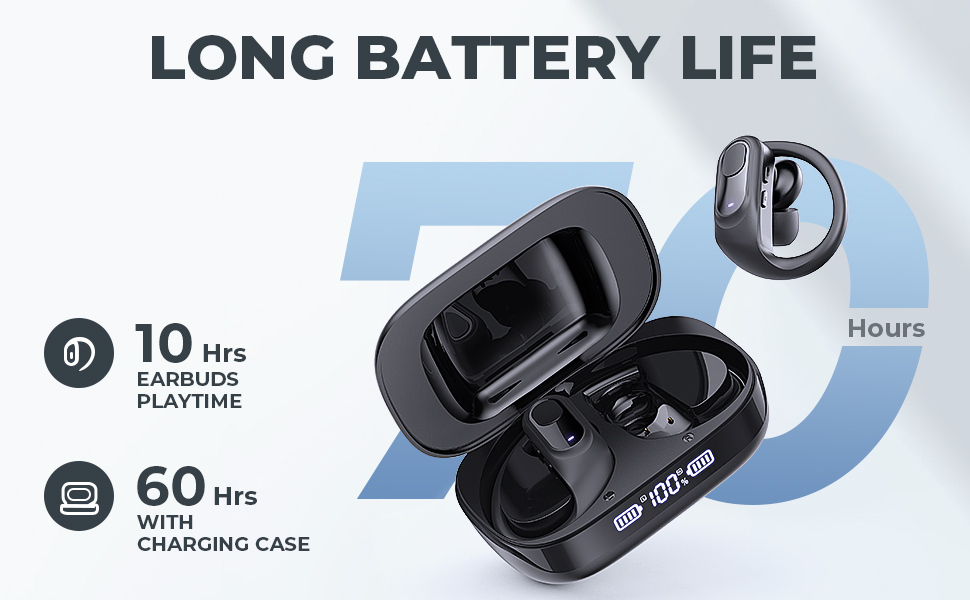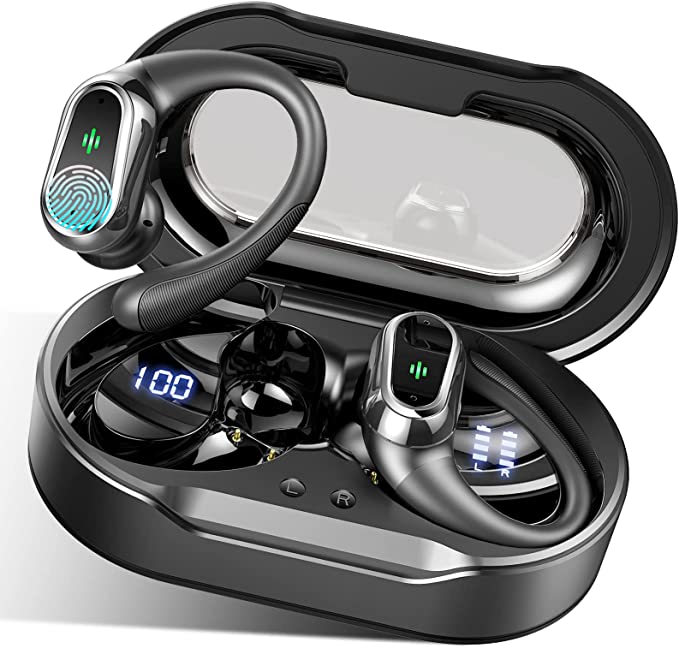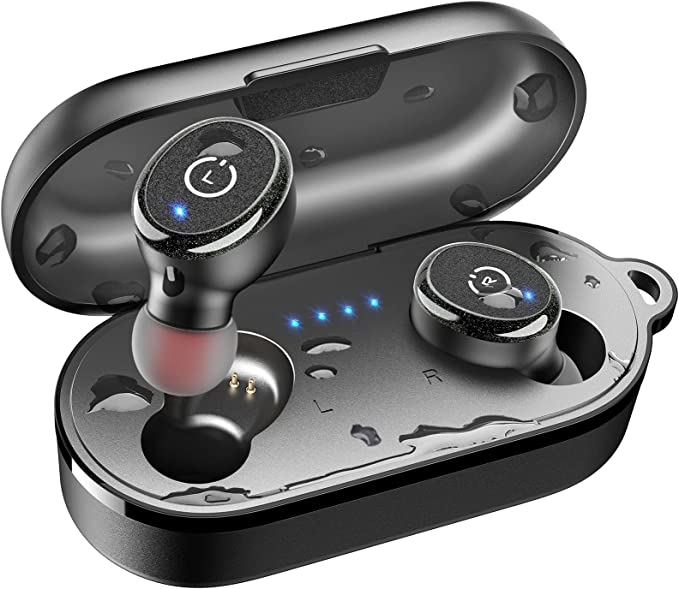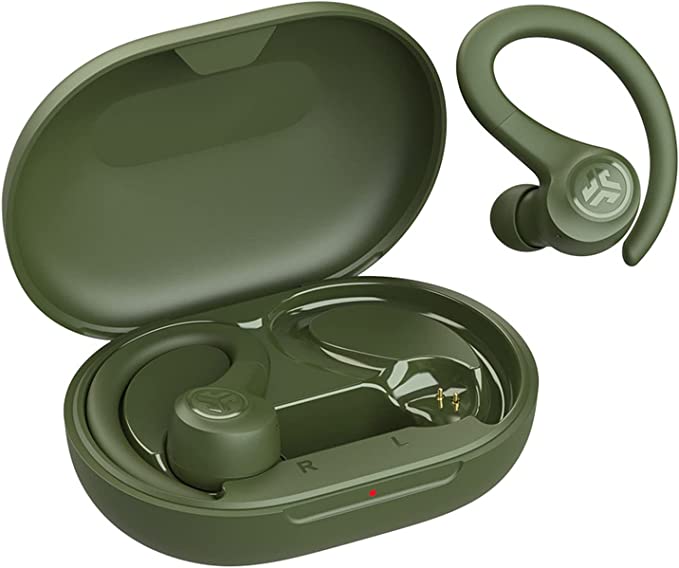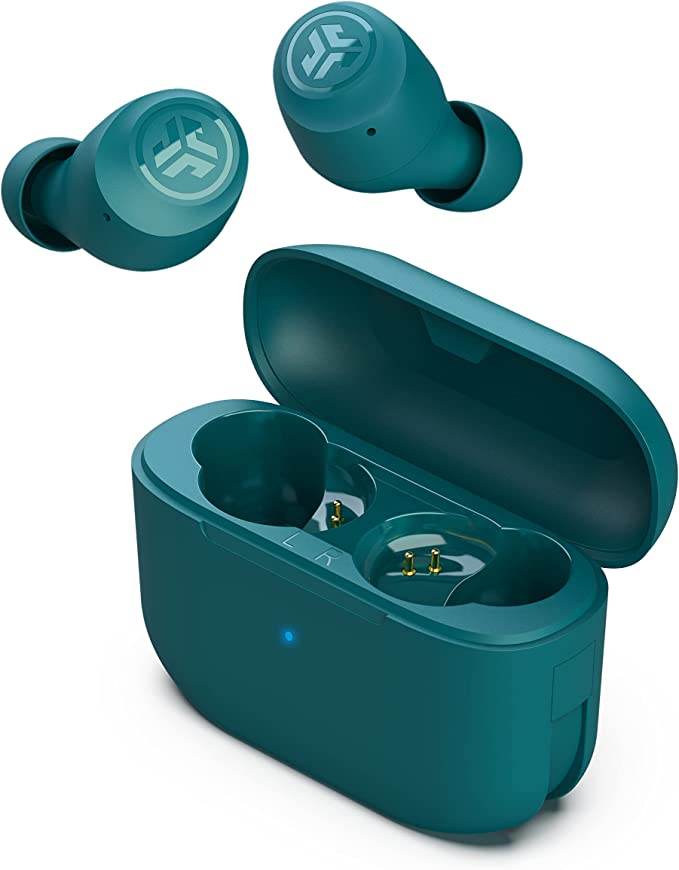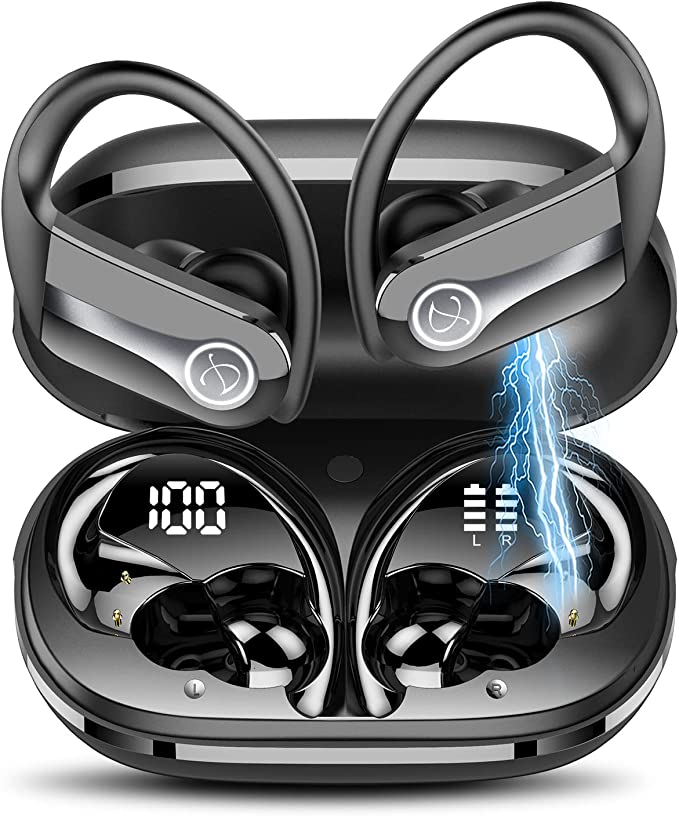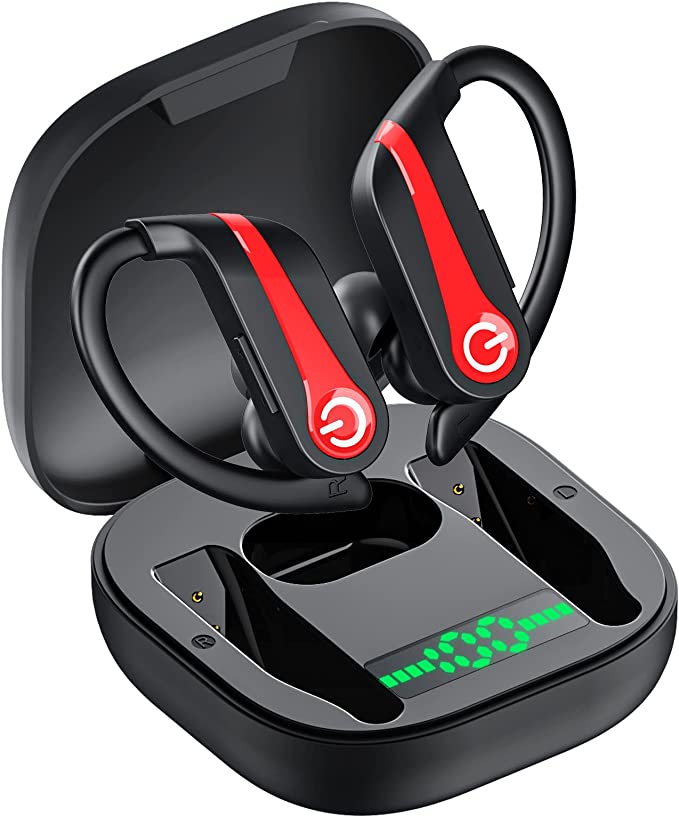Plantronics Backbeat Fit 2100: Stay Aware and Energized on Your Toughest Workouts
Update on May 15, 2025, 4:43 a.m.
The life of an active individual often involves treading an auditory tightrope. Picture this: a runner pounding the city pavement, the rhythm of their favorite playlist a powerful motivator, their breath a steady cadence. Or a cyclist navigating a park trail, the immersive soundscape a welcome escape. Yet, in these moments of focused exertion, a crucial dilemma emerges – how does one remain enveloped in the energizing world of audio without becoming dangerously oblivious to the world outside? The honk of a car, the whir of an approaching e-bike, even the friendly greeting of a fellow enthusiast – these are sounds that demand our attention. It’s this very challenge, this balancing act between immersion and awareness, that products like the Plantronics Backbeat Fit 2100 wireless headphones aim to address. As an audio technology and human factors engineering specialist, I’ve seen many attempts to solve this puzzle. Let’s delve into the science and design philosophy that underpins this particular endeavor, exploring how it strives to be a trusted companion on your most demanding workouts.

The Open Secret – Unveiling “Always Aware” Eartips
Traditional in-ear headphones often achieve their rich, immersive sound by creating a tight seal within the ear canal. This acoustic isolation is fantastic when you want to lose yourself in music in a quiet, controlled environment. However, transfer this to the dynamic, unpredictable stage of an outdoor workout, and that same isolation can transform from a feature into a significant hazard.
The Plantronics Backbeat Fit 2100 approaches this problem with a design philosophy embodied in its “Always Aware” eartips. The product information from Plantronics states these eartips are engineered to not fully block the ear canal. This isn’t just a casual design choice; it’s a deliberate acoustic strategy. Think of it as creating a controlled leak, but in a sonically intelligent way. The science here touches upon how sound waves interact with physical structures. By avoiding a complete occlusion, the eartip allows certain ambient sounds – those crucial environmental cues – to naturally reach your eardrum. It’s not merely about punching holes in an earbud; that would be a crude and ineffective solution leading to terrible audio quality. Instead, the “Always Aware” design likely involves a carefully sculpted eartip shape and material choice that permits the transmission of external sounds, particularly in the mid to high-frequency range where many warning signals (like voices, beeps, or tire sounds on pavement) reside, while still directing the musicDrivers’ output towards your ear canal.
This design aims to strike a delicate balance: providing enough of your music to keep you motivated, yet allowing enough of the outside world in to keep you safe. Imagine running along a busy street; the “Always Aware” feature is designed so you might still register the rumble of an approaching bus or the distinct click of a cyclist’s gears behind you. On a park trail, it could mean hearing a dog barking in the distance or a fellow runner calling out “on your left!” This isn’t about sacrificing your music entirely for the sake of a stark, unfiltered reality; it’s about integrating your personal soundtrack more safely into the symphony of your surroundings. As a designer, I can appreciate the complexity here – it’s a constant negotiation between the desire for immersive audio and the non-negotiable need for situational awareness. Achieving this balance effectively is a true feat of acoustic engineering.

The Rhythm of Motion – Audio Fidelity Meets Athletic Demands
Now, allowing external sound to mingle with your music naturally presents a challenge to maintaining audio fidelity. If the “Always Aware” eartips are designed for openness, how does the Backbeat Fit 2100 still promise “natural mid-tones, crisp highs,” as the manufacturer claims? The answer lies significantly with the 13.5mm drivers housed within each earbud.
In the world of headphones, driver size can be an indicator of an earphone’s ability to move air and thus reproduce sound, particularly at lower frequencies. While not the sole determinant of sound quality (enclosure design, tuning, and driver material play equally crucial roles), a 13.5mm driver is reasonably substantial for an in-ear headphone, especially one not relying on a perfect seal. These drivers are tasked with delivering a sound profile that remains engaging even when competing with some level of ambient noise. The emphasis on “natural mid-tones” is important for vocal clarity – think podcasts, audiobooks, or the vocals in your music – while “crisp highs” contribute to the detail and energy of the sound, crucial for percussion and the overall liveliness of a track. For an athlete, this means your motivational coach’s voice in your training app should come through clearly, and the upbeat tempo of your power song should retain its punch.
Furthermore, the Backbeat Fit 2100 offers three equalizer (EQ) presets accessible via the Plantronics BackBeat app. This is a nod to the subjective nature of audio preference and the varying acoustic environments one might encounter. EQ presets allow users to subtly sculpt the sound signature – perhaps boosting bass for a more thumping rhythm during a high-intensity interval session, or opting for a flatter, more neutral profile for a relaxed cool-down walk. The science of EQ involves selectively amplifying or attenuating specific frequency bands. By offering these presets, Plantronics empowers users to tailor the audio experience to their liking, providing a degree of personalization that complements the fixed “Always Aware” design.
It’s worth noting that a semi-open design inherently makes achieving deep, thumping bass more challenging than with sealed in-ear monitors, as some low-frequency energy can escape. Audio engineers often compensate for this through driver tuning and specific acoustic chamber designs. The goal for a sports headphone like this isn’t necessarily audiophile-grade, ruler-flat neutrality in a silent room, but rather a robust, clear, and motivating sound that performs well in the often noisy and always dynamic context of a workout. It’s about delivering an audio experience that enhances, rather than detracts from, the athletic endeavor.

Defying Gravity and Distraction – The Ergonomic Ballet of Fit and Comfort
Ask any runner or gym-goer about their biggest pet peeves with headphones, and “earbuds falling out” or “becoming uncomfortable” will undoubtedly top the list. An intense workout involves a symphony of motion – jarring impacts, sudden turns, constant head movements, and, of course, perspiration. All these factors conspire to dislodge ill-fitting headphones, turning a potential source of motivation into a frustrating distraction. The Plantronics Backbeat Fit 2100 confronts this ergonomic challenge head-on with a multi-pronged design strategy aimed at achieving an ultra-stable and comfortable fit.
The foundation of this stability lies in its flexible and lightweight neckband. Unlike truly wireless earbuds that exist as two independent units, the neckband tethers the earpieces. This design, according to Plantronics, “stays in place during workouts so you won’t have to fidget with the fit.” From an ergonomic perspective, a well-designed neckband helps distribute the minimal weight of the unit (a mere 0.986 ounces, or about 28 grams, as per product information) across a larger contact area around the neck, rather than having all the mass cantilevered from the ears. Its flexibility allows it to conform to different neck sizes and movements without exerting undue pressure or torque on the earpieces.
Further securing the earpieces are soft, flexible, and super-secure earloops. These loops are designed to trace the contour of the ear’s auricle (the visible, cartilaginous part), providing a crucial anchoring point. The choice of soft, flexible materials here is key; rigid hooks can cause pressure points and discomfort over time, especially when combined with the repetitive motion of exercise. The goal is a snug embrace that resists the G-forces of running or the contortions of a yoga pose, without pinching or chafing.
Recognizing that one size rarely fits all when it comes to ear canals, Plantronics includes three different eartip sizes. This is more than just a convenience; it’s fundamental to both comfort and acoustic performance. An eartip that’s too small will fail to provide a stable seat in the ear canal and may compromise the “Always Aware” feature’s intended acoustic balance. An eartip that’s too large can exert excessive pressure, leading to soreness and fatigue during extended wear. Finding the right eartip size ensures the earbud sits correctly, maximizes stability, and helps deliver sound as the designers intended.
The cumulative effect of the lightweight construction, the supportive neckband, the secure earloops, and the customizable eartip sizing is an attempt to make the headphones feel like a natural, almost unnoticeable, extension of the athlete. When headphones achieve this level of ergonomic integration, they cease to be a piece of gear one wears and become part of the workout experience itself, allowing the user to focus entirely on their performance and surroundings.
The Unseen Shield – Braving Sweat, Rain, and Rigors
Exercise is a sweaty business. Add to that the possibility of an unexpected rain shower during an outdoor run, and it becomes clear that any electronic device accompanying an athlete needs to be built Buchstabenfest – literally “letter-proof,” or in this context, robust. The Plantronics Backbeat Fit 2100 is marketed as being “Sweatproof and Waterproof,” a critical attribute for its intended use.
The salty, acidic nature of human sweat can be surprisingly corrosive to electronic components and materials over time. Moisture, in general, is the nemesis of intricate circuitry. While the product information provided doesn’t specify a particular IP (Ingress Protection) rating – the standardized system for classifying the degrees of protection provided by enclosures of electrical equipment – the “sweatproof and waterproof” claim implies a significant level of resilience.
Scientifically, achieving this involves several potential strategies. Hydrophobic nano-coatings are one common approach in modern electronics. These are microscopically thin layers applied to surfaces that repel water, causing droplets to bead up and roll off rather than seeping in. Another crucial aspect is sealed casing design. This means ensuring that any seams, ports (like the charging port), or button interfaces are gasketed or otherwise protected to prevent moisture ingress. The materials used for the headphone housing and cables also play a role; they need to be resistant to degradation from prolonged exposure to sweat and UV radiation if used outdoors.
For an athlete, this robust construction translates to peace of mind. It means not having to worry that an intense, sweat-drenching session or a run in light rain will lead to a premature demise of their audio companion. This durability is what elevates a pair of sports headphones from a fair-weather accessory to a dependable training partner, ready to perform through the rigors of consistent, hard-fought workouts. It’s the unseen shield that protects the delicate technology within, allowing the music to play on.
The Unseen Tether – Power, Connectivity, and Control
In our wirelessly interconnected world, the performance of portable electronics is often judged by the three Cs: Charge (battery life), Connectivity (wireless reliability), and Control (ease of use). The Plantronics Backbeat Fit 2100 addresses these with features tailored for the active user.
The manufacturer states a listening time of “Up to 7 hours” on a single charge. For most athletes, this is a generous allotment. It could comfortably cover a week’s worth of hour-long gym sessions, several long runs, or even the duration of a marathon for many participants. This endurance is typically provided by a compact Lithium Polymer (Li-Poly) battery, favored in portable devices for its relatively high energy density (more power in a smaller, lighter package) and flexible form factor, allowing it to be integrated into the slim neckband design. Of course, actual battery life can vary based on factors like volume level and the type of audio content, but a 7-hour rating provides a solid benchmark.
Wireless freedom comes courtesy of Bluetooth technology. The product information indicates a wireless range of “Up to 10 m/33 ft.” This generally corresponds to Class 2 Bluetooth devices, which is standard for most personal audio products. For an athlete, this means their phone or music player can typically be stashed in a pocket, armband, or nearby gym bag without signal dropout, allowing for unencumbered movement. Bluetooth itself is a fascinating piece of radio technology that allows devices to “talk” to each other over short distances using UHF radio waves in the ISM band (2.4 to 2.485 GHz). It’s a complex dance of frequency hopping and data packet exchange that, when it works seamlessly, feels like magic.
Beyond just playing music, effective control is paramount during a workout. Fumbling with a smartphone mid-stride is both inconvenient and unsafe. The Backbeat Fit 2100 features on-earbud controls. The product information highlights the ability to “Set a timer, start a stopwatch or select your favorite playlist directly from your earbuds without ever interrupting your workout,” with these extended features likely facilitated through the companion Plantronics BackBeat app for iOS and Android. Tactile buttons, which are often easier to locate and operate by feel than touch-sensitive surfaces (especially with sweaty fingers), are a common and practical choice for sports headphones. This integration of on-device controls and app-based customization allows athletes to manage their audio and even some workout-related functions with minimal disruption, keeping their focus squarely on their physical exertion and their surroundings.
A Legacy Forged in Extremes – From Tranquility Base to Your Training Route
When discussing Plantronics, it’s hard to ignore a rather stellar piece of its history, which the company itself often highlights: “In 1969, Neil Armstrong and Buzz Aldrin, along with their team at NASA were on a mission… to the moon. And they took our headsets with them.” This isn’t just a quaint historical footnote; it speaks volumes about a legacy of engineering audio equipment for mission-critical applications in the most demanding environments imaginable. The challenges of clear, reliable communication in the vacuum of space, amidst the vibrations of a rocket launch, or within the confines of a lunar module are immense.
While designing headphones for an earthly marathon or a gym session presents a different set of challenges, that heritage of robust engineering and a focus on clear audio delivery can be seen as a foundational philosophy. The drive to create technology that performs reliably under stress, whether it’s the stress of microgravity or the stress of a high-intensity interval training session, is a powerful through-line. This history doesn’t automatically guarantee a perfect product today, of course, but it does suggest a corporate DNA that values resilience and performance. It’s a reminder that the technology we often take for granted in our daily lives can have roots in extraordinary human endeavors, gradually refined and adapted to enhance our everyday experiences – like making a grueling run just a little more enjoyable and a lot safer.
Beyond the Finish Line – Technology as Your Ally in Well-being
The Plantronics Backbeat Fit 2100, as we’ve explored through its design for awareness, stability, audio performance, and resilience, aims to be more than just a conduit for sound. It represents a considered attempt to integrate audio technology thoughtfully into an active lifestyle. Its core design philosophy appears centered on balance: the balance between musical immersion and environmental perception, between a secure fit and long-wearing comfort, between lightweight design and robust durability.
This product, and others like it, are indicative of a broader trend where technology is increasingly tailored to support and enhance our pursuit of well-being. For the athlete, or indeed anyone who enjoys an active life, the right gear can remove barriers, enhance focus, and increase enjoyment. The “Always Aware” eartips address a genuine safety concern, the ergonomic considerations aim to eliminate a common source of frustration, and the weatherproof construction offers reliability.
While the product page notes that this specific model is “Currently unavailable,” its features and the science behind them offer a valuable case study in designing for the athlete. It underscores how understanding the unique demands of an activity – the need to hear traffic, the multi-directional forces during a burpee, the corrosive nature of sweat – can drive innovation that genuinely serves the user. As audio technology continues to evolve, with advancements in miniaturization, battery efficiency, and smart features, the potential to create even more seamless and intuitive athletic companions is vast. The quest continues for that perfect harmony of sound, safety, and an unobtrusive presence, allowing us to lose ourselves in the effort, supported by technology that truly understands our needs.
